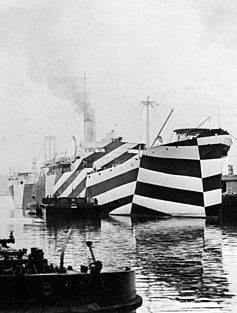Text and Illustrations taken from The Saint Andrew Daily Missal,
unless otherwise stated.
The Church Triumphant.
The Church Militant.
The Church Suffering.
Illustration taken from UNA VOCE OF ORANGE COUNTY
who reproduce Text and Illustrations from The Saint Andrew's Daily Missal, 1952 Edition,
with the kind permission of ST. BONAVENTURE PUBLICATIONS
Artist: Rene de Cramer.
“Copyright Brunelmar/Ghent/Belgium”.
Used with Permission.
First Vespers
for The Feast of All Saints.
Available on YouTube at
The bells ring out as joyously as on the brightest days. They announce the great Solemnity of the closing Cycle: the Feast which shows us time stamped with the impress of eternity, and God taking possession of the declining year and gathering in its harvest. At the sound of their triumphant and harmonious peals, the Church, prostrate and Fasting since morning, raises her brow to the light. Guided by Saint John, she penetrates the secrets of Heaven; and the words of The Beloved Disciple, uttered by her lips, assume a tone of incomparable enthusiasm. This Feast is truly The Triumph of her motherhood; for the great crowd of the Blessed, before the Throne of The Lamb, are the sons and daughters she alone has given to The Lord.
Psalm CIX: Dixit Dominus.
This is one of the Messianic Psalms. The Messias sits at the Right Hand of The Father. He is The Son of God, The Priest of The Most High, The King Triumphant.
Psalm CX: Confitebor Tibi.
The Prophet sings the wonders worked by God for His people during the exit from Egypt and at Mount Sinai. This is a figure of what God does for The Church.
Psalm CXI: Beatus Vir.
The Just Man is happy because he follows the Commandments of God; great will be his reward in Heaven.
Psalm CXII: Laudate Pueri.
This Psalm is the beginning of the Hallel, which the Jews sang especially at Easter, while eating the Paschal Lamb.
Psalm CXVI: Laudate Dominum.
The Power of God has been made manifest: Ours the duty of praising it.

Vespers.
All-Night Vigil.
By
Serge Rachmaninoff.
Available on YouTube at
The All-Night Vigil (Russian: Всенощное бдение, Vsenoshchnoe bdenie), Opus 37, is an a cappella choral composition by Sergei Rachmaninoff, written and premiered in 1915. It consists of settings of Texts taken from The Russian Orthodox All-Night Vigil Ceremony.
It has been praised as Rachmaninoff's finest achievement and "the greatest musical achievement of The Russian Orthodox Church". It was one of Rachmaninoff's two favourite compositions, along with The Bells, and the composer requested that one of its movements (the fifth) be sung at his funeral. The title of the work is often translated as simply "Vespers", which is both literally and conceptually incorrect as applied to the entire work: only the first six of its fifteen movements set Texts from The Russian Orthodox Canonical Hour of Vespers.
Chapter: Apocalypse vii. 2-3.
Behold, I, John, saw another Angel ascending from the rising of the sun, having the sign of The Living God; and he cried with a loud voice to the four Angels to whom it was given to hurt the Earth and the sea, saying: Hurt not the Earth, neither the sea, nor the trees, till we sign the servants of our God in their foreheads.
Hymn (Eighth Tone).
Rabanus Maurus, Abbot of Fulda and Archbishop of Mayence, is supposed to be the author of the following Hymn. The perfidious nation, whose expulsion from Christian lands is prayed for, was, in the 9th-Century, the race of infidel Normans, who filled the empire with slaughter and ruin under Charlemagne's weak successors. The striking conversion of these savage destroyers was the answer of the Saints. May they ever hear the Church's Prayers in a like manner, enlighten those who persecute her without knowing her, and make of them her firmest supporters. [Editor: This paragraph is taken from The Liturgical Year, by Abbot Guéranger, O.S.B.]
Rabanus Maurus, Abbot of Fulda and Archbishop of Mayence, is supposed to be the author of the following Hymn. The perfidious nation, whose expulsion from Christian lands is prayed for, was, in the 9th-Century, the race of infidel Normans, who filled the empire with slaughter and ruin under Charlemagne's weak successors. The striking conversion of these savage destroyers was the answer of the Saints. May they ever hear the Church's Prayers in a like manner, enlighten those who persecute her without knowing her, and make of them her firmest supporters. [Editor: This paragraph is taken from The Liturgical Year, by Abbot Guéranger, O.S.B.]
Placare Christe servulis,
Quibus Patris clementiam,
Tuae ad tribunal gratiae,
Patrona Virgo postulat . . .
O Christ, Thy guilty people spare,
Lo, bending at Thy gracious throne,
Thy Virgin Mother pours her Prayer,
Imploring pardon for her own . . .
The Magnificat
at Solemn Tridentine Vespers.
CIEL Conference,
Merton College,
Oxford,
England.
October 2006.
Available on YouTube at
All The Choirs of Angels, all The Ranks of The Saints, receive, in The Magnificat Antiphon, the homage of The Church's Prayer; and all will join in praising The Queen of Heaven and Earth, by singing her own glorious Canticle. [Editor: This paragraph is taken from The Liturgical Year, by Abbot Guéranger, O.S.B.]
Angeli, Archangeli, Throni et Dominationes,
Principatus et Potestates, Virtutes caelorum,
Cherubim atque Seraphim, Patriarchae et Prophetae,
sancti legis Doctores, Apostoli, omnes Christi Martyres,
sancti Confessores, Virgines Domini, Anachoritae
Sanctique omnes, intercedite pro nobis.
Mary's answer to her cousin, Elizabeth, who hails her as The Mother of God, Blessed among women.
The Church sings The Canticle of Mary, The Magnificat, in which are celebrated The Divine Maternity and all its consequent Blessings. This exquisite Canticle is an essential part of The Office of Vespers. It is The Evening Incense, just as The Canticle "Benedictus", at Lauds, is that of the Morning Incense. [Editor: This paragraph is taken from The Liturgical Year, by Abbot Guéranger, O.S.B.]
Magnificat: Anima mea Dominum.
Et exultavit spiritus meus:
In Deo salutari meo . . .
My Soul doth magnify The Lord.
And my Spirit hath rejoiced in God my Saviour . . .
The Prayer.
Omnipotens sempiterne Deus,
qui nos omnium sanctorum tuorum
merita sub una tribuisti celebritate venerari . . .
O Almighty, Everlasting God,
Who hast granted us to Venerate
in one Solemnity the Merits of all Thy Saints . . .
BENEDICTION OF THE BLESSED SACRAMENT.
In his Motu Proprio, of 1903, Pope Saint Pius X insists on "the importance of The Solemn Chanting of Vespers, to which may be added, with advantage, a suitable Sermon and Benediction of The Blessed Sacrament." Compline, chanted in the evening, may also be followed by Benediction, this latter Devotion is thus brought into association with The Official Worship of The Church.

.jpg&container=blogger&gadget=a&rewriteMime=image%2F*)
.jpg&container=blogger&gadget=a&rewriteMime=image%2F*)























